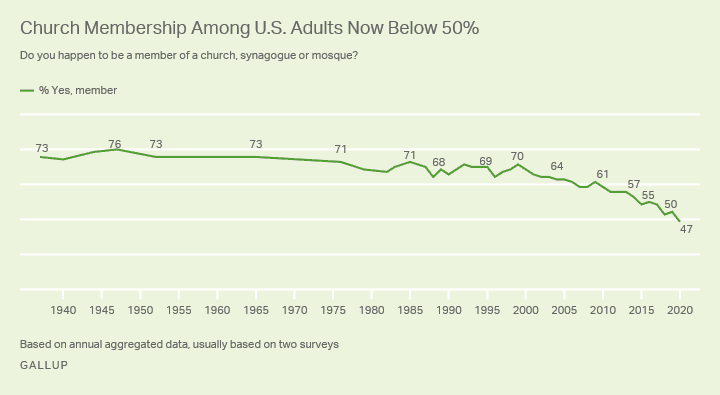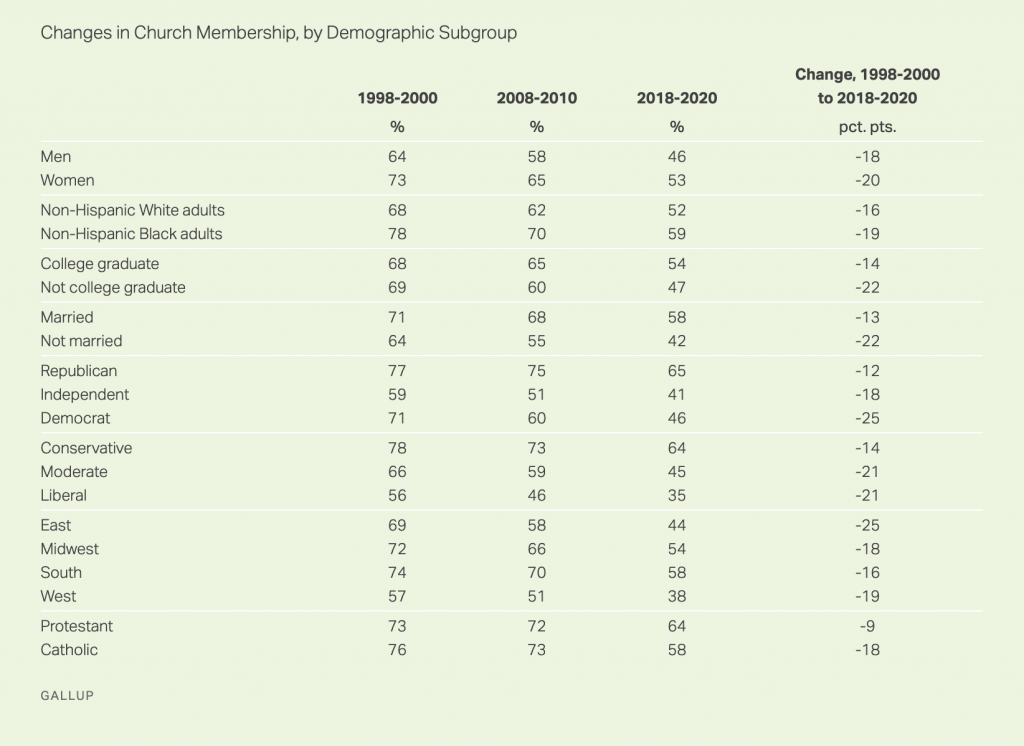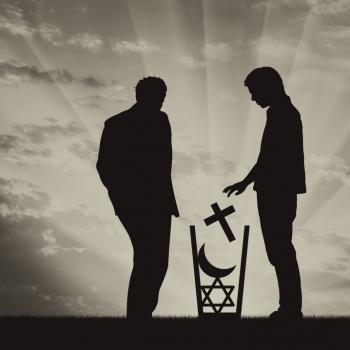MARCH 29, 2021
Church attendance is at an all time low and the pandemic doesn’t deserve the blame.
(Congratulations, everyone. We did it. Extra cookies for everyone at the next meeting.)
According to a new Gallup poll, only 47% of Americans say they belong to a house of worship, marking the first time ever that the number has dipped below 50%. It’s a continuation of a trend that began decades ago but has been accelerating in recent years.

What’s the cause for this change? Gallup says the main factor is the rise of people with no religious preference at all — not just atheists, but believers who want nothing to do with organized religion.
The decline in church membership is primarily a function of the increasing number of Americans who express no religious preference. Over the past two decades, the percentage of Americans who do not identify with any religion has grown from 8% in 1998-2000 to 13% in 2008-2010 and 21% over the past three years.
Here’s what’s especially interesting about that: You would expect the “Nones” not to go to church. But even among religious people, church membership is in decline. In 2000, roughly 73% of believers belonged to a religious institution. That number is now sitting at 60%.
Even more damning? Those numbers are tilted in the direction of the elderly. Only 36% of Millennials says they belong to a church (or mosque or synagogue) compared to 66% of those born before 1946. Every age bracket has seen a decline in church attendance, and that includes young people who weren’t going to church in large numbers to begin with.
In other words, the trend lines aren’t looking good for religious leaders no matter how you parse the data.
Let me repeat that. There’s a decline in church membership no matter which group you’re looking at. Compared to two decades ago, there’s been a drop in attendance among non-college graduates (22% drop), single people (22%), Republicans (12%), Conservatives (14%), and people who live in the South (16%).

Gallup makes clear that anyone who blames these numbers solely on COVID is missing the point:
The U.S. remains a religious nation, with more than seven in 10 affiliating with some type of organized religion. However, far fewer, now less than half, have a formal membership with a specific house of worship. While it is possible that part of the decline seen in 2020 was temporary and related to the coronavirus pandemic, continued decline in future decades seems inevitable, given the much lower levels of religiosity and church membership among younger versus older generations of adults.
Gallup doesn’t get into why all this is happening, but I would argue that you could safely assign blame to the right-wing politicization of many prominent churches (and entire denominations), the consistent bigotry many religions still harbor against LGBTQ people, the sex abuse scandals, the treatment of women, the abundance of resources for people questioning or leaving their faith, and the fact that so many more Americans now know non-religious people (and realize we’re not monsters).
While it’s true that certain individual churches with hard-core right-wing Trump-loving messages may have grown in size over the years — there’s certainly an audience for Christian Nationalism — those same tactics also push away anyone who’s on the fence about faith or whose religious beliefs don’t align with those views. (I’m hoping the Republican Party itself sees the same fate: They’ll be just fine in Mississippi, I’m sure, but there will be hell to pay in the long run in states like Georgia.)
Ultimately, the reason for the decline in church attendance seems to have more to do with the actions (and inactions) of religious leaders than any coordinated push away from organized religion. Pastors ought to look in the mirror before they blame atheists (or a virus) for what’s happening to religion in America.
Happy early Easter.
(Featured image via Shutterstock)
- TAGGED WITH:
- ATHEIST DEMOGRAPHICS
- GENERAL
